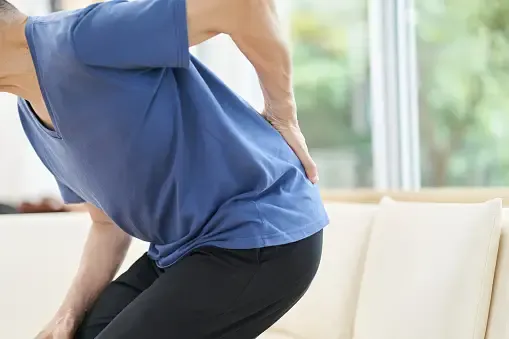john@lee-mat.com
+86-13510662576

GET QUOTE
Causes of Lower Back Pain on Your Left or Right Side
Dealing with lower back pain? You're not alone. Lower back pain is one of the most common issues affecting muscles, bones, tendons, ligaments, and nerves worldwide. A 2020 study in the Annals of Translational Medicine even labeled it as the leading cause of disability and missed work. As if that wasn't enough, the COVID-19 quarantines in 2020 worsened the situation, according to research in the International Journal of Environmental Research and Public Health.
Deciphering Lower Back Pain
When your back aches, understanding the source becomes crucial. Is it a broad band of discomfort across your lower back, or is the pain concentrated on one side? The distinction matters. A band-like pain is likely related to a spinal disc, while one-sided pain often points to issues like muscle strains, hip joint problems, or sacroiliac joint trouble, linking your pelvis and low spine. Remember, lower back pain can be acute, lasting a few days, or chronic, persisting for over 12 weeks.
Identifying the Culprits
Muscle Sprain or Strain
The most common cause, often from poor posture or incorrect lifting. A spasm might hit, signaling muscle distress. Rest and proper lifting are your allies.
Poor Posture
Aging and neglecting posture contribute to chronic lower back pain. Simple adjustments, like sitting up straight and engaging your core, can make a significant difference.
Weak Core Muscles
If your core isn't supporting your spine, lower back pain may strike. Strengthen your core through exercises and maintain good posture during daily activities.
Herniated Disc
When the soft interior of a spinal disc bulges out, it can press on nerves, causing pain. Strengthening your spine and maintaining joint health can reduce the risk.
Myofascial Issues
Inflammation of the muscles' connective tissue can lead to pain, often resolved with massage, stretching, and proper care.
Kidney Stones
Pain from kidney stones, located higher up the back, may be felt on one side. Staying hydrated helps prevent stones, and medical intervention may be necessary for larger ones.
Uterine Issues
Conditions like endometriosis or uterine fibroids can cause back pain. Proper diagnosis and treatment, including hormonal birth control or surgery, may be necessary.
Ovarian Cyst
Fluid-filled sacs on the ovaries can lead to pain, with ruptured cysts causing severe discomfort. Diagnosis involves exams and imaging, and treatment may include hormonal birth control.
When to Seek Professional Help?
Persistent or worsening pain, numbness or weakness in the legs, bowel or bladder issues, and new or severe symptoms warrant a visit to the doctor. Immediate medical attention is crucial for issues like herniated discs, nerve compression, or neurological deficits. If in doubt, consult your doctor to rule out rare but serious conditions like abdominal aneurysm, kidney or pancreatic cancer, inflammation, or kidney stones.
In the quest for relief, understanding your lower back pain's origin is the first step. Don't let it hinder your daily life – take action and consult a professional if needed.
Conclusion
Understanding lower back pain is like solving a puzzle – each ache tells a story. From muscle strains to internal issues like kidney stones or uterine problems, the causes vary. Listen to your body, take preventive measures, and when in doubt, consult your doctor. Your lower back deserves attention, ensuring your life remains pain-free.

